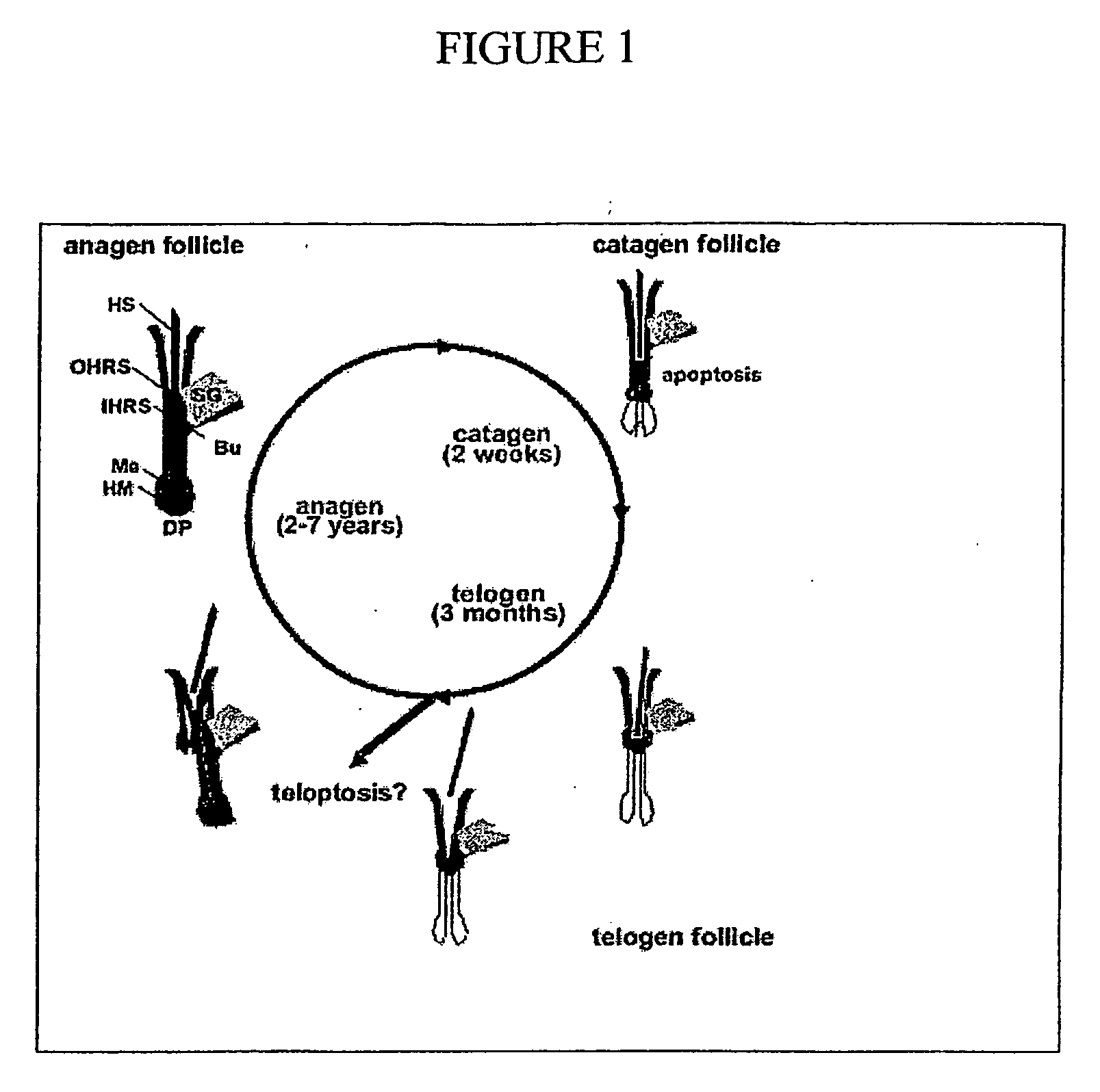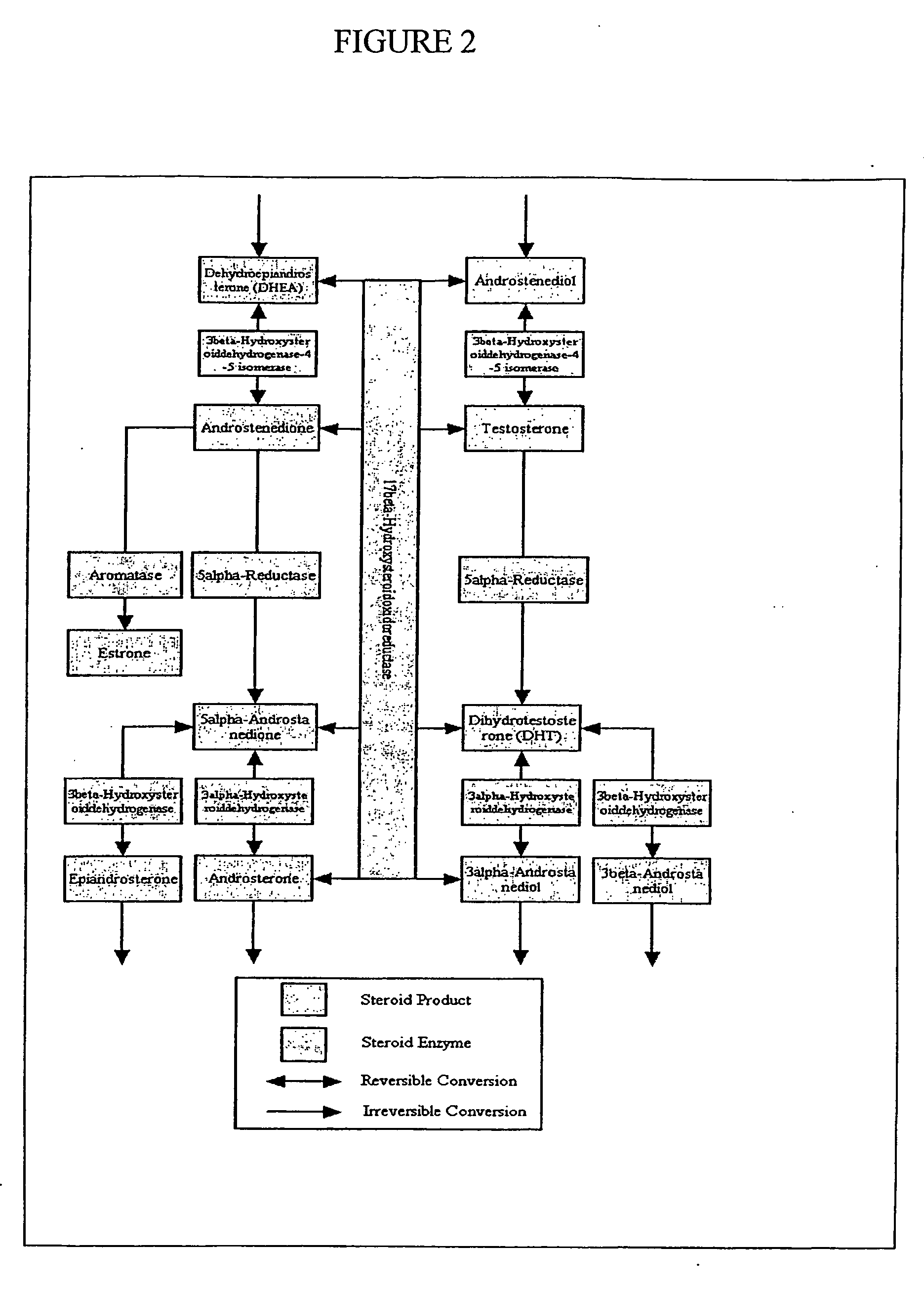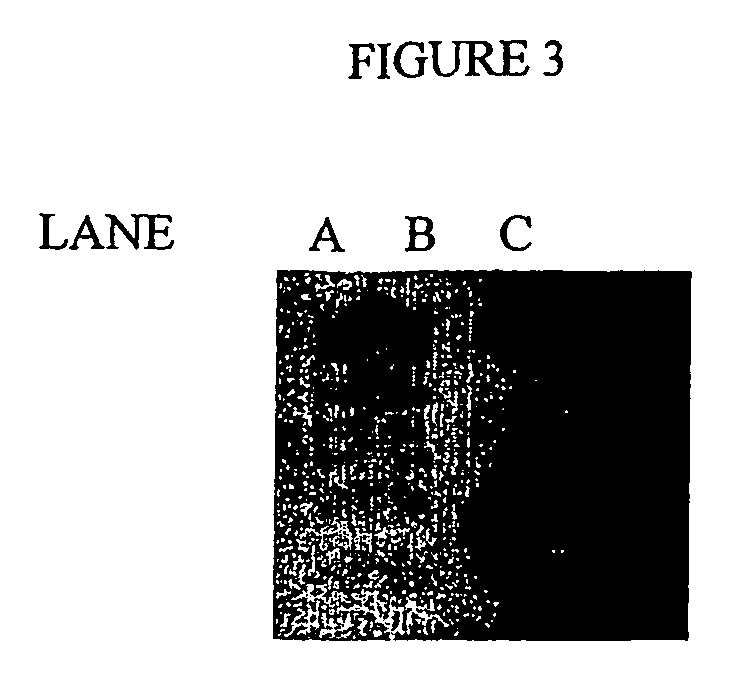Sirna mediated post-transriptional gene silencing of genes involved in alopecia
- Summary
- Abstract
- Description
- Claims
- Application Information
AI Technical Summary
Benefits of technology
Problems solved by technology
Method used
Image
Examples
embodiments
[0042] Embodiments of present disclosure are directed, in part, to preventing, reducing, or inhibiting hair loss in a host, for example a mammal, using compositions comprising inhibitory nucleic acids such as siRNAs or salts or prodrugs thereof. The siRNAs of the present disclosure are designed to inhibit or interfere with the translation of mRNA encoding proteins involved in the androgen signal transduction pathway. In some aspects, the siRNAs induce the enzymatic cleavage of target mRNAs. Proteins involved in the androgen signal transduction pathway include but are not limited to: the androgen receptor, 5-α reductase, aromatase, 3-α-hydroxysteroiddehydrogenase, 3-β-hydroxysteroiddehydrogenase, 3-β-hydroxysteroiddehydrogenase-4-5-isomerase, 17-β-hydroxysteroidoxidoreductase, and steroid sulfatase. Alternatively, aspects of the disclosure is also directed to inducing or increasing the growth of hair, for example using compositions comprising inhibitory nucleic acids such as siRNAs. ...
example 1
Synthesis of siRNA
[0096] Single-stranded, gene-specific sense and antisense RNA oligomers optionally with overhanging 3′ deoxynucleotides are prepared and purified by PAGE using the sequences listed in Tables 1-9 below. The two oligomers, 40 μM each, are annealed in 250 μl of buffer containing 50 mM Tris-HCl, pH 8.0 and 100 mM NaCl, by heating to 94° C. for 2 minutes, cooling to 90° C. for 1 minute, then cooling to 20° C. at a rate of 1° C. per minute. The resulting siRNA is stored at −20° C. prior to use.
[0097] The steroid 5-apha-reductase (SRD5a Locus Link id: 6715) was PCR amplified from the full-length cDNA clone (clone MGC: 12396 IMAGE: 3683274). Primers were designed to generate the full-length clone for TA-cloning into pcDNA 3.1 CT-GFP. As such, the reverse primer lacked a stop codon (Forward Primer: atgcaggttcagtgccagca [Seq ID No.: 1401]; Reverse Primer: ttaaaaagatgaatggaataag [Seq ID No.: 1402]) The 800 base pair product is shown in FIG. 3.
example 2
In Vitro Assays
[0098] To determine the inhibition of androgen signal transduction proteins with siRNAs prepared above, the siRNAs are administered to cell culture cells expressing androgen signal transduction pathway proteins such as the androgen receptor or 5α reductase. Exemplary cell lines expressing androgen signal transduction pathway proteins are found in the catalogue for American Tissue Type Culture which is incorporated herein in its entirety. Briefly, cell lines are maintained in RPMI 1640 media (GibcoBRL, Gaithersburg, Md.) containing 10% BCS. Varying amounts (150-350 μg / ml) of siRNA were added to the culture media. Cells are incubated under the same conditions, at 37° C., in 5% CO2 for 1-4 days. At the end of the incubation period, the cells are washed with PBS (phosphate buffered saline) and detached from the culture vessels using eversene. The cells are then assayed for expression of androgen signal transduction proteins such as androgen receptor and or 5α reductase. ...
PUM
| Property | Measurement | Unit |
|---|---|---|
| Time | aaaaa | aaaaa |
| Therapeutic | aaaaa | aaaaa |
Abstract
Description
Claims
Application Information
 Login to View More
Login to View More - R&D
- Intellectual Property
- Life Sciences
- Materials
- Tech Scout
- Unparalleled Data Quality
- Higher Quality Content
- 60% Fewer Hallucinations
Browse by: Latest US Patents, China's latest patents, Technical Efficacy Thesaurus, Application Domain, Technology Topic, Popular Technical Reports.
© 2025 PatSnap. All rights reserved.Legal|Privacy policy|Modern Slavery Act Transparency Statement|Sitemap|About US| Contact US: help@patsnap.com



